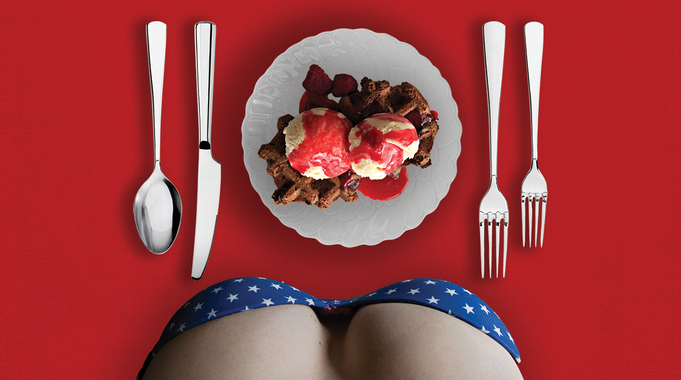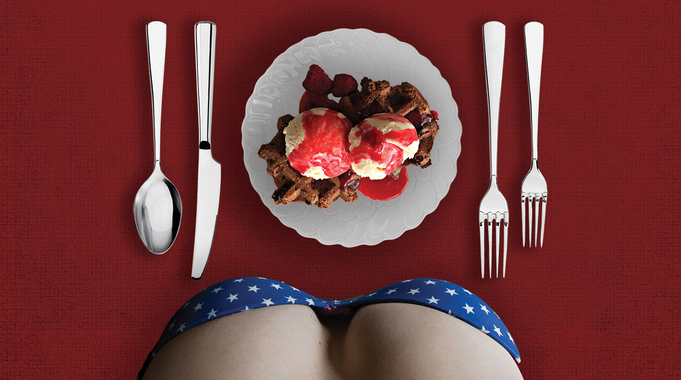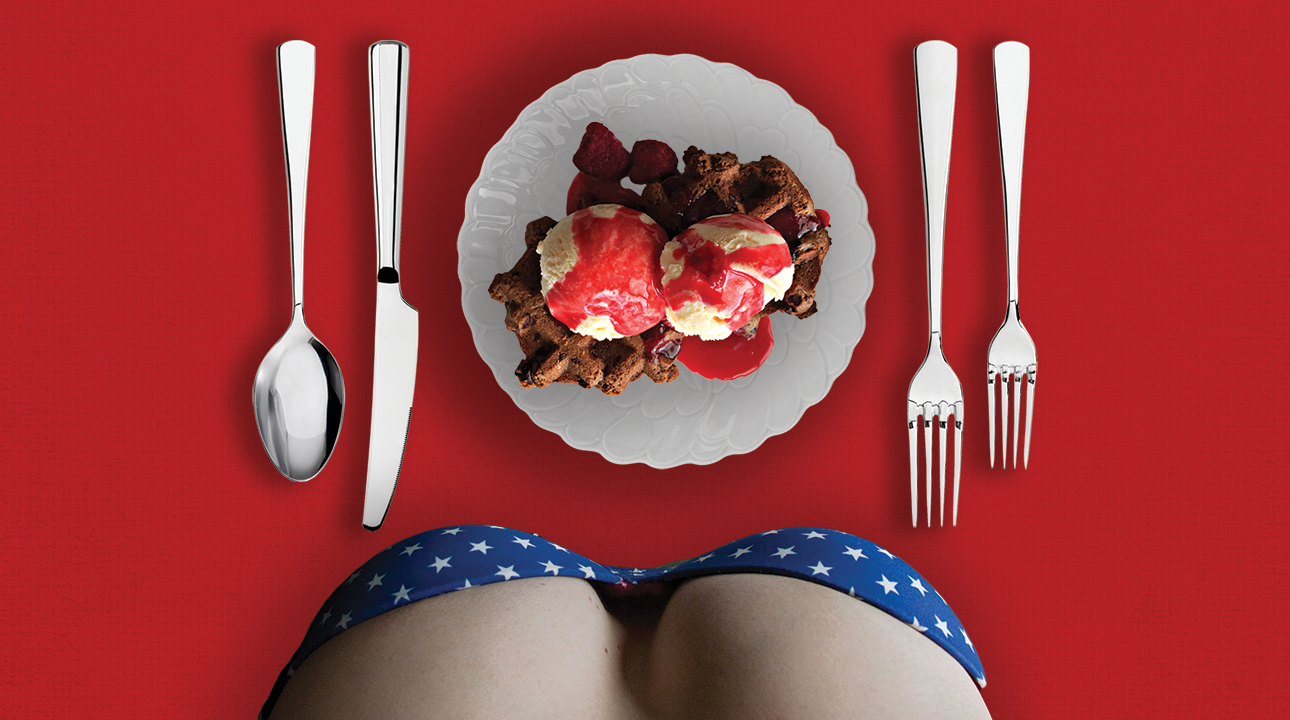Consumption
by jparet
This work has been commented by 1 curator(s). Read the comments
Title
Consumption
Headline
Pleasure as an Instinct and Social Normative
Concept author(s)
Julia Paret
Concept author year(s) of birth
1988
Concept author(s) contribution
The concept was created through my understanding of pleasure as an instinctual behavior in relation/response to western culture.
Concept author(s) Country
United States of America
Friendly Competition
Competition category
Visual communication practice
Competition subcategory
static
Competition field
academic
Competition subfield
student
Subfield description
North Carolina State University - Graphic Design
Check out the Pleasure 2016 outlines of Memefest Friendly competition.
Description of idea
Describe your idea and concept of your work in relation to the festival outlines:
Pleasure is what makes food and drink gratifying. It is a mental, biological/neurological phenomenon. Behavior is driven by pleasure and is not just a reactionary result stemming from basic need. Pleasure is also what molds the response for future action. For example, food can control our behavior. It is also instinctual. Pleasure is an instinctual impetus, similar to sex and hunger. In short, pleasure can control our behavior.
In this work, I re-conceptualize pleasure as a basic human instinct through a visceral, metaphorical association with food. There is an added connotation of how pleasure transforms the way we think. Pleasure is an instinctual behavior, akin to the consumption of sweets that serves as gratification. In many Western cultures, there is a social normative that allows the sexualization of bodies. However, this piece calls into question the selfishness derived from the pleasure of objectification.
What kind of communication approach do you use?
I utilize visual metaphor by relating two entities such that attributes of the source (waffles and ice cream) are mapped onto a the target entity (breasts) using contextual evidence. The waffles are delicious and visualized as something to be eaten. The breasts are therefore, also delicious, and something to be consumed. There is also a visual narrative by placing the viewer as an active participant as the 'owner' of the breasts. The placement of the utensils add tension illuminating the proposition of human body parts as an act of aggression. The vantage point feels threatening.
What are in your opinion concrete benefits to the society because of your communication?
Social constructs influence the transformation of self-image. I bring this phenomenon to light by placing the viewer in a highly susceptible role in which s/he has no control. As the person with the breasts, the viewer is able to conceptualize the associative aggression of being transformed into an object to be used for the pleasure of others. I ask the viewer to reflect upon the sexualization of [womens'] bodies and how society derives pleasure at the expense of the dignity of others. The benefit of society is through empathetic understanding.
What did you personally learn from creating your submitted work?
If you flip the image around so that you are sitting in the "consumer's" position (the plate of food directly in front of you with the breasts across from you), the image takes on a whole different meaning. By playing the role of the consumer, instead of the consumed, the utensils are less aggressive as they are pointing away from you. The image becomes much more cliché with the simple association of delicious food, delicious breasts. It is interesting how a simple reversal of roles can have such a visceral reaction.
Why is your work, GOOD communication WORK?
This image is successful because it creates active dialog through the construction of meaning. It functions as performative imagery through integrated visual discourse using interpretational processing and cognitive work. It serves as an aid to help the audience conceptualize the human body as a "consumable" by comparing it to dessert. It also engenders empathetic understanding by casting the viewer in an active role.
Where and how do you intent do implement your work?
The image was created as a response to an editorial article on pleasure as a basic human instinct. I was inspired by the social implication posed by this competition to reevaluate how instinct and social awareness interact. The image was intended as an editorial image for articles on the objectification of others and/or pleasure as a basic human instinct or social normative.
Did your intervention had an effect on other Media. If yes, describe the effect? (Has other media reported on it- how? Were you able to change other media with your work- how?)
No?
Curators Comments
Roderick Grant
As an editorial illustration the work functions at a high formal level, controlling the composed space through clear use of direction, symmetry and colour contrast. I can't help but think of the work in the context of the New Yorker, it reads in that voice of eliciting a clear, critical message, but without too heavy a hand. In fact, I wonder immediately about placing the work in such a context, or similar to test the efficacy of the image. I'm also immediately curious of the image being used as a means to inhabit space, as the potential of placing oneself in different positions in relation to the work is suggested in the brief.
That aspect of spatial play makes me think about thresholds as spaces for installation - the transition from hallway to bedroom, kitchen to dining room, dining room to living room, and the ability of the image to serve as a visual break between such functions/roles in the domestic setting, changing our perception of the relations we expect to experience in each space.
These thoughts deal with the image as a flat construct, but I'd also be curious to see the image perform standing on end, occupying the height of a domestic space, where the breasts might seem to enter a space from the edge of a door frame, or the corner of a room - again, to shift the potential critical reception of the statements inherent in its imagery.
The ability of the work to deal with multiple critical issues in a single frame to be commended, and the formal control with which these issues are foregrounded - gender, consumption, objectification, nourishment - works well as submitted. I think through some experimentation with projection the work might begin to inhabit space in a different manner, starting with the kitchen, which may lead to a third reading of the image critical of a domestic division of labour. I offer these suggestions up, but I'm also just curious to see what the image might do to architectural space, given its formal qualities...great potential there.
I also wonder, in reference to the second work submitted, if the series depicted could focus on further anatomical investigations against other foods, other table settings to both see how far the metaphorical comparison can be carried without breaking...or taking past the point of breaking and asking why...
There are all manner of tangents possible here into pornography, fast food, the nature of nourishment, the investment of meaning into specific objects (which is well underway in the submission) - the spatial aspect I'd be very curious to see.
Perhaps also, coming full circle to the editorial environment, using the magazine or the book as a space of play for the installation of such imagery - how the spine can be used as a means of hiding/revealing, a spread becomes a tool of comparison - in short, using the "technology" of editorial construction to further manipulate and invest meaning into the imagery over the space and time of multiple pages would also be a worthwhile investigation allowing the viewers understanding to both unfold, and be undermined over the course of a publication. Good work.




